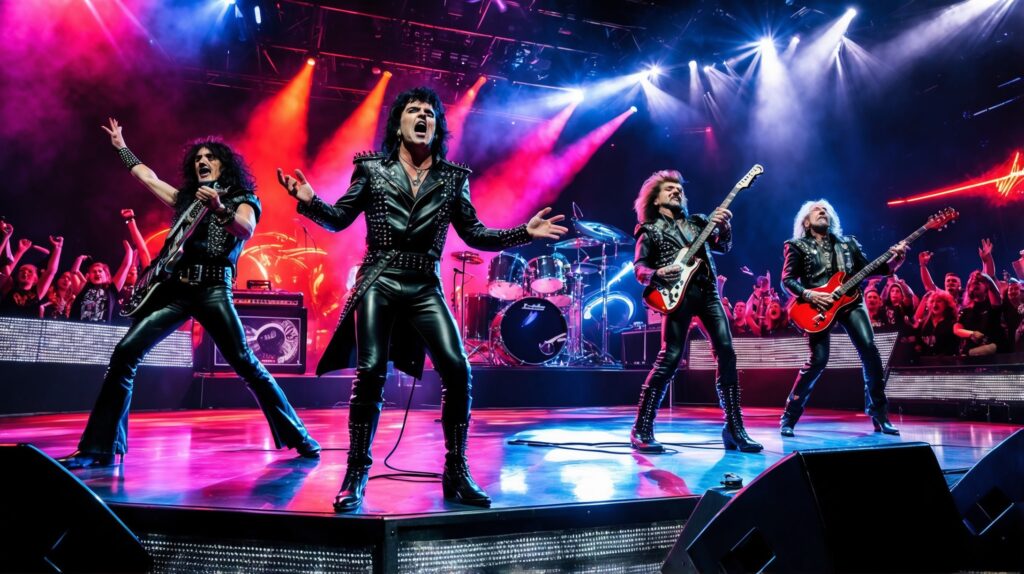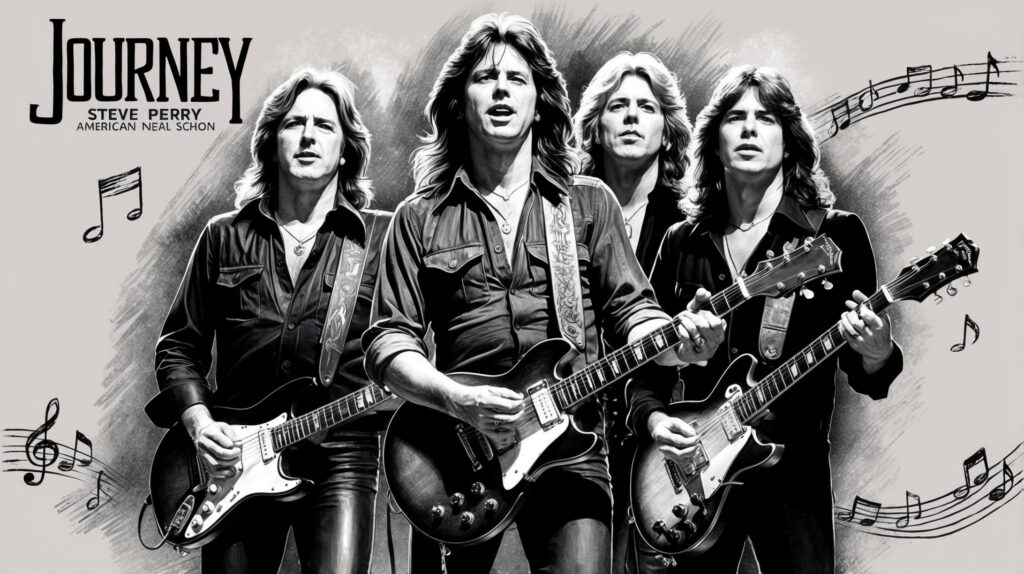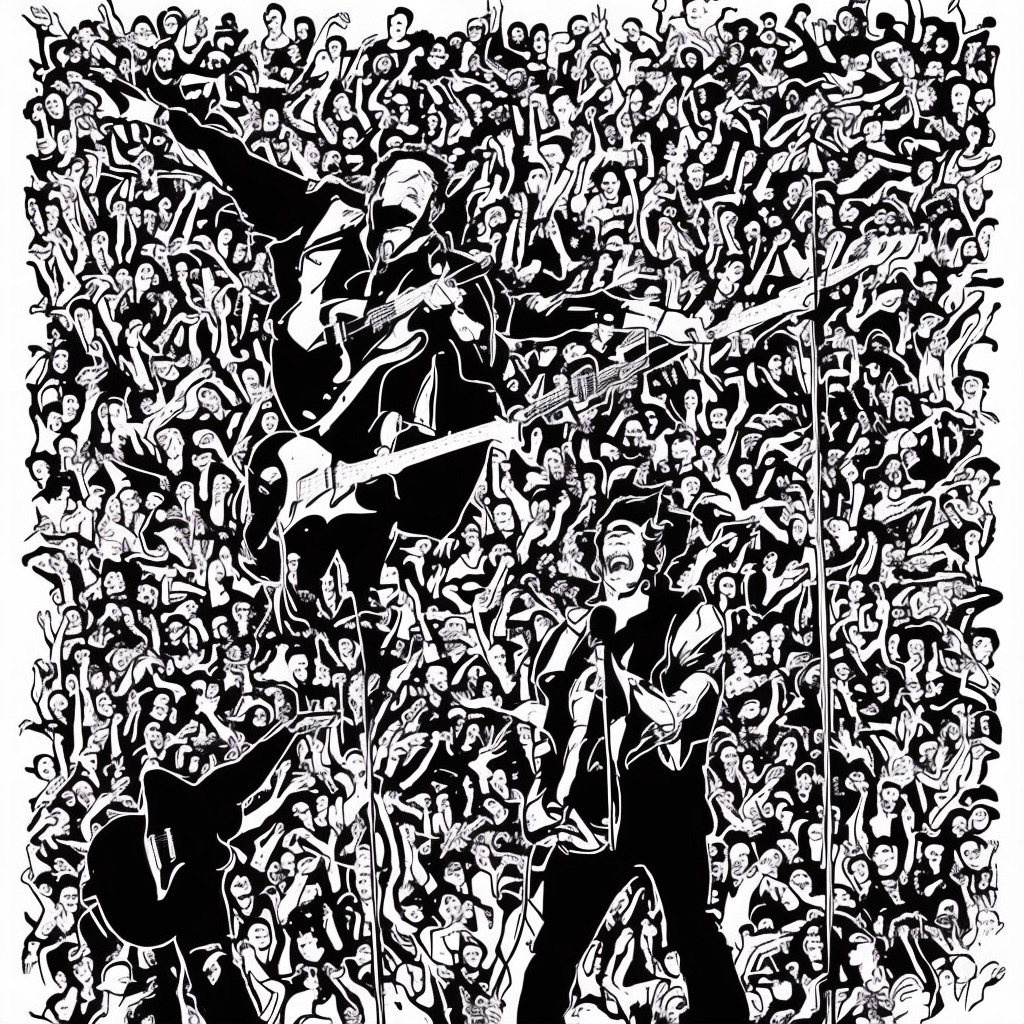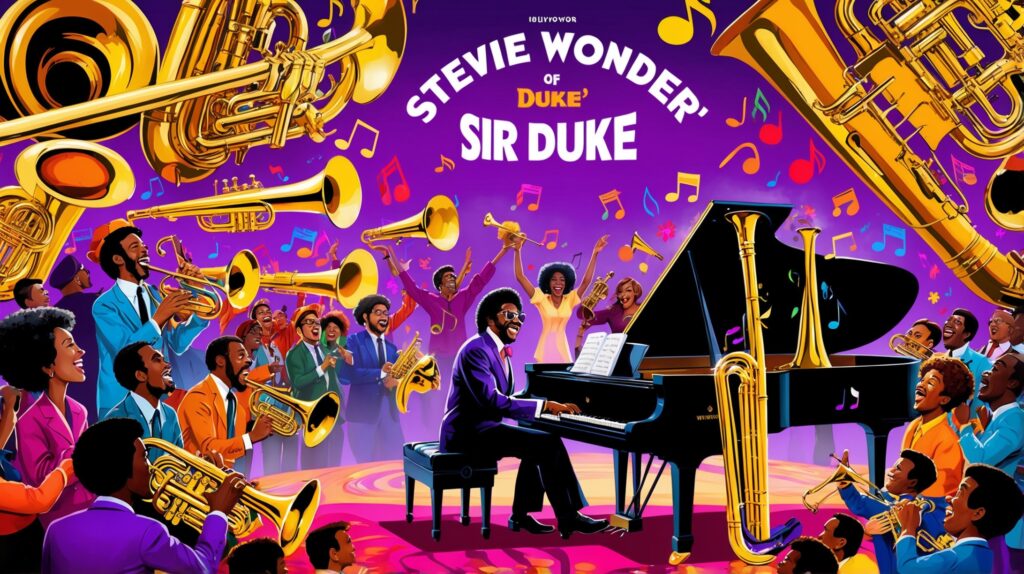The Metal Titans Behind “Turbo Lover”
Judas Priest, with their iconic sound and dynamic stage presence, defined the metal genre. “Turbo Lover,” from their 1986 album “Turbo,” showcases both their legacy and their experimental edge during the mid-80s era.
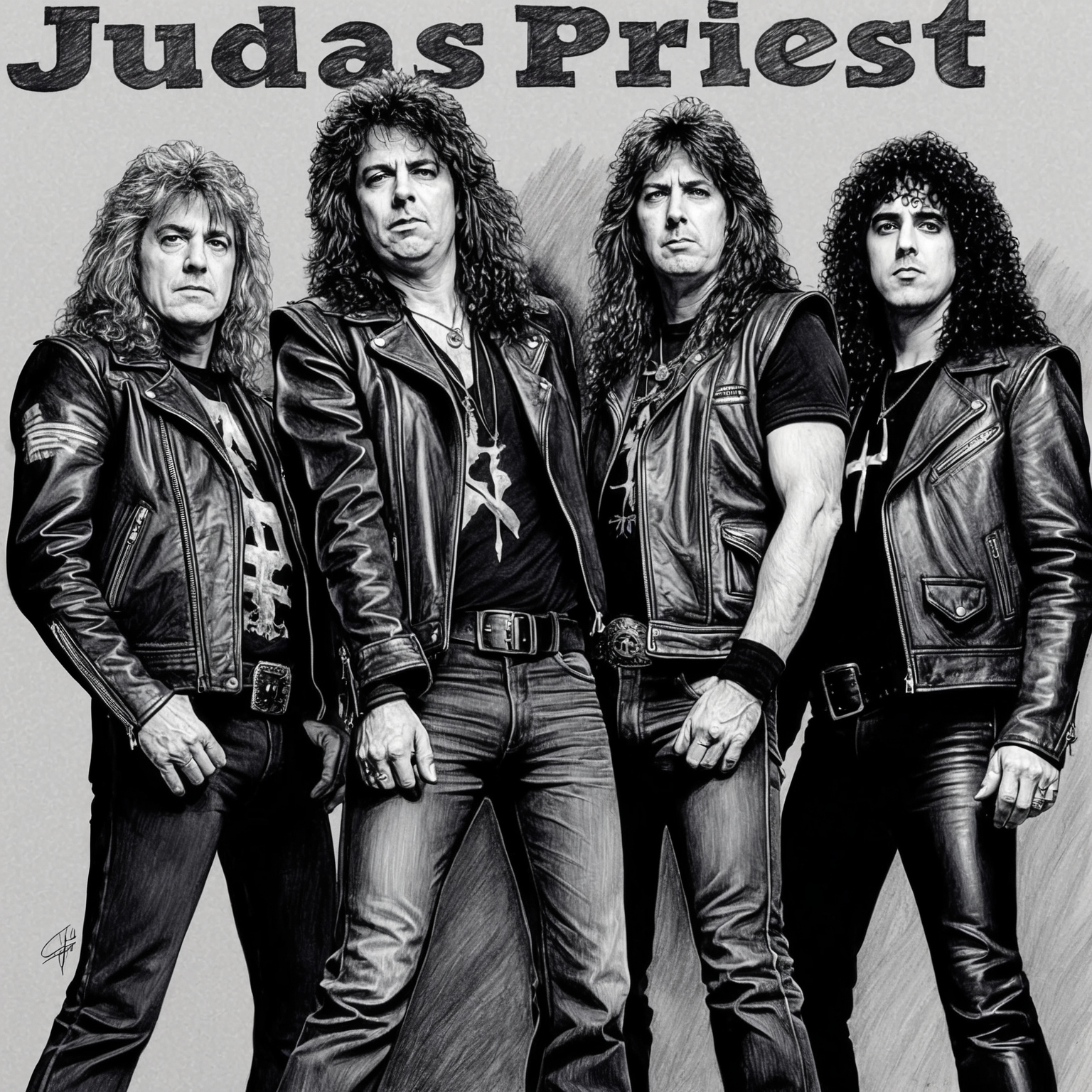
Judas Priest, often hailed as the quintessential heavy metal band, carved a niche for themselves in the music world with their distinctive brand of powerful sound and electrifying performances. “Turbo Lover,” a track from their experimental 1986 album “Turbo,” highlights a significant period in their career marked by both innovation and controversy. Known for their archetypal metal image, complete with leather and studs, Judas Priest was instrumental in defining the genre.
Emerging from the industrial shadows of Birmingham, England, Judas Priest was formed in the 1970s by founding member K.K. Downing and bassist Ian Hill. The band underwent several lineup changes before settling with charismatic frontman Rob Halford, whose operatic vocal range became a signature feature of their music. Their early career laid the foundation for what would become a narrative of legendary success, reaching a global audience and earning accolades as one of the leading figures in metal.
The mid-80s represented a unique chapter in Judas Priest’s history. As musical tastes evolved with the advent of synthesizers and electronic elements, so did their experimentation. “Turbo Lover” exemplified the band’s willingness to embrace new technology, integrating synth-heavy sounds which were somewhat of a departure from their traditional heavy metal roots. This period was marked by significant collaboration among band members, all of whom shared a deep involvement in the composition and production processes, resulting in a sound that reflected both their artistic growth and the prevailing trends of the time.
Ken Downing: The Creative Force Behind ‘Turbo Lover’
Ken Downing, a founding member of Judas Priest, played an instrumental role in composing ‘Turbo Lover.’ His unique blend of classic rock and metal influences helped shape the song’s iconic sound.

Ken Downing’s Background and Career
Ken Downing, popularly known as Glenn Tipton’s long-time collaborator, is a pivotal figure in the world of heavy metal. His journey into music began in West Bromwich, England, where he was born in 1951. Growing up in the heart of the UK’s industrial midlands provided the unique backdrop that influenced his raw and powerful guitar style. Downing’s early career was shaped by the burgeoning rock scene of the 1960s and 70s, contributing to his future success as a founding member of Judas Priest.
Musical Style and Influences of Downing
Ken Downing’s musical style is characterized by his electrifying guitar riffs, distinct from his era’s typical rock compositions. Drawing inspiration from pioneering acts such as Jimi Hendrix and Eric Clapton, Downing helped define Judas Priest’s sound, blending classic rock with avant-garde metal influences. His technical proficiency on the guitar set a new standard in the genre, securing his place among rock’s elite.
Collaborations and Role in ‘Turbo Lover’
Downing’s role in creating ‘Turbo Lover’ is crucial. As a composer, he worked closely with bandmates Rob Halford and Glenn Tipton to craft the song’s hypnotic melodies and driving riffs. This close collaboration allowed their distinct styles to merge seamlessly, producing a signature sound that resonated with fans and critics. The pulsating rhythm of ‘Turbo Lover’ can be attributed to Downing’s adept use of technology and innovation, ensuring its lasting impact and success.
Celebrating Turbo Lover: Awards, Covers, and Cultural Impact
Turbo Lover’ by Judas Priest may not have received many awards but its cultural impact is undeniable. The song has been covered by artists like Anthem and featured in games like ‘Grand Theft Auto: Vice City Stories.’

Judas Priest’s ‘Turbo Lover’ may not have amassed a plethora of awards, yet its influence on the rock and metal scene is undeniably significant. The song, released as part of the album ‘Turbo’ in 1986, represents a shift in the band’s sound, embracing synthesizers and a more polished production. While neither ‘Turbo Lover’ nor the album ‘Turbo’ received major awards upon release, they have achieved a cult status among fans and music critics alike over the decades.
One of the most notable covers of ‘Turbo Lover’ came from the Japanese power metal band Anthem, who released their version in 2019. This cover showcased the song’s enduring appeal and its influence across different metal sub-genres. While not every track gets the cover treatment decades after its original release, ‘Turbo Lover’ has transcended time, finding resonance with new generations of listeners and musicians.
In addition to its legacy within the music industry, ‘Turbo Lover’ has made several notable appearances in popular culture. It was featured in the soundtrack for the video game ‘Grand Theft Auto: Vice City Stories,’ further cementing its presence in media outside of the traditional music consumption platforms. This inclusion allowed fans to revisit the song within a new narrative context, connecting it to a nostalgic, yet timeless experience. Such appearances highlight the enduring appeal of Judas Priest’s creation and contribute to its status as a classic.
Turbo Lover’s Journey on the Charts: An Exploration of Impact and Reception
Explore the chart journey of Judas Priest’s ‘Turbo Lover’, examining its impact and reception in the heavy metal scene. Despite modest chart placements, this track marked a bold musical evolution for the band, infusing synth-heavy sounds into their iconic repertoire.

Turbo Lover, a powerhouse track from Judas Priest’s 1986 album “Turbo“, made a significant impression in the heavy metal scene upon its release. Launched into a landscape where hair metal was beginning to dominate, this song fused synth-heavy sounds with classic rock, offering a fresh experience for fans and critics alike. Although it did not top the charts globally, its impact rippled through various musical landscapes, particularly resonating with Judas Priest’s loyal fanbase.
In terms of hard numbers, “Turbo Lover” debuted to moderate chart success. In the U.K., it landed modestly on the singles chart, reflecting a steady appreciation from an established fanbase rather than explosive new listener engagement. In the U.S., it received significant radio play, and its memorable hook and innovative blend of synthesizers with heavy metal riffs helped it secure spots on rock-oriented charts, exposing the band to new audiences. Compared to other tracks of the era, “Turbo Lover” held its ground strongly in the niche Judas Priest thrived in.
The release of “Turbo Lover” marked a fascinating period in Judas Priest’s career trajectory. It wasn’t a breakthrough hit as the band was already a towering icon in the heavy metal world, but it did act as a creative milestone, showcasing their willingness to innovate and adapt. The song was part of a broader strategy to evolve their sound, introducing electronic elements into their music, which set the stage for future musical explorations. In doing so, it contributed to the band’s longevity in a dynamically shifting musical industry. The promotional efforts behind the track included vibrant music videos and performances that underscored its energetic appeal, aiding its solid performance within the rock circuits even if it didn’t smash mainstream barrier charts.
From a cultural perspective, “Turbo Lover” did not become an anthem in the traditional sense but has continued to enjoy a cult status among fans of the genre. The song has been celebrated for blending classic heavy metal with modern influences and holds a respected place in the evolution of rock music. Critics have consistently praised its boldness in sonic experimentation, viewing it as a reflection of Judas Priest’s role as trailblazers. Years later, its enduring popularity on streaming platforms and inclusion in various retrospectives of the band’s work underline its lasting legacy. Social media communities and dedicated fan forums further showcase ongoing discussions about its artistry and influence, ensuring “Turbo Lover” remains relevant in both nostalgic and contemporary contexts.
Exploring the Visuals of ‘Turbo Lover’
The music video landscape for ‘Turbo Lover’ is a tapestry of fan creations and live performances, celebrating the song’s zest through dynamic visuals.

While ‘Turbo Lover’ by Judas Priest doesn’t have an official music video, its presence has been vividly felt through a variety of fan-made videos and live performance recordings. These various visual interpretations not only celebrate the song’s high-octane energy but also contribute to its long-lasting popularity. One notable aspect of these fan videos is their commitment to encapsulating the song’s themes of speed, freedom, and passion, often featuring fast cars, motorcycles, and dynamic visual effects that align perfectly with the spirit of the track.
The contribution of these visual offerings to ‘Turbo Lover’s’ resonance among fans cannot be underestimated. The simplicity and accessibility of live performance videos further amplify the song’s appeal, showcasing Judas Priest’s commanding stage presence and their connection with the audience. Live versions spotlight lead vocalist Rob Halford’s incredible range and the band’s dynamic instrumentation, translating the energy of the song into powerful, memorable performances.
These alternative video formats have been critically received as brilliant fan tributes that amplify the song’s already dazzling auditory experience. Often shared widely on platforms like YouTube, these videos demonstrate the enduring impact of ‘Turbo Lover,’ giving both longtime fans and new listeners a compelling visual companion to the metallic beats and thrilling lyrics of the track.
A Technical Dissection of ‘Turbo Lover’: Unpacking the Sonic Architecture
Explore the intricate musical architecture of Judas Priest’s “Turbo Lover,” a track that blends traditional rock elements with synth innovation, marked by distinctive guitar riffs, synth layers, and a steady, hypnotic tempo.
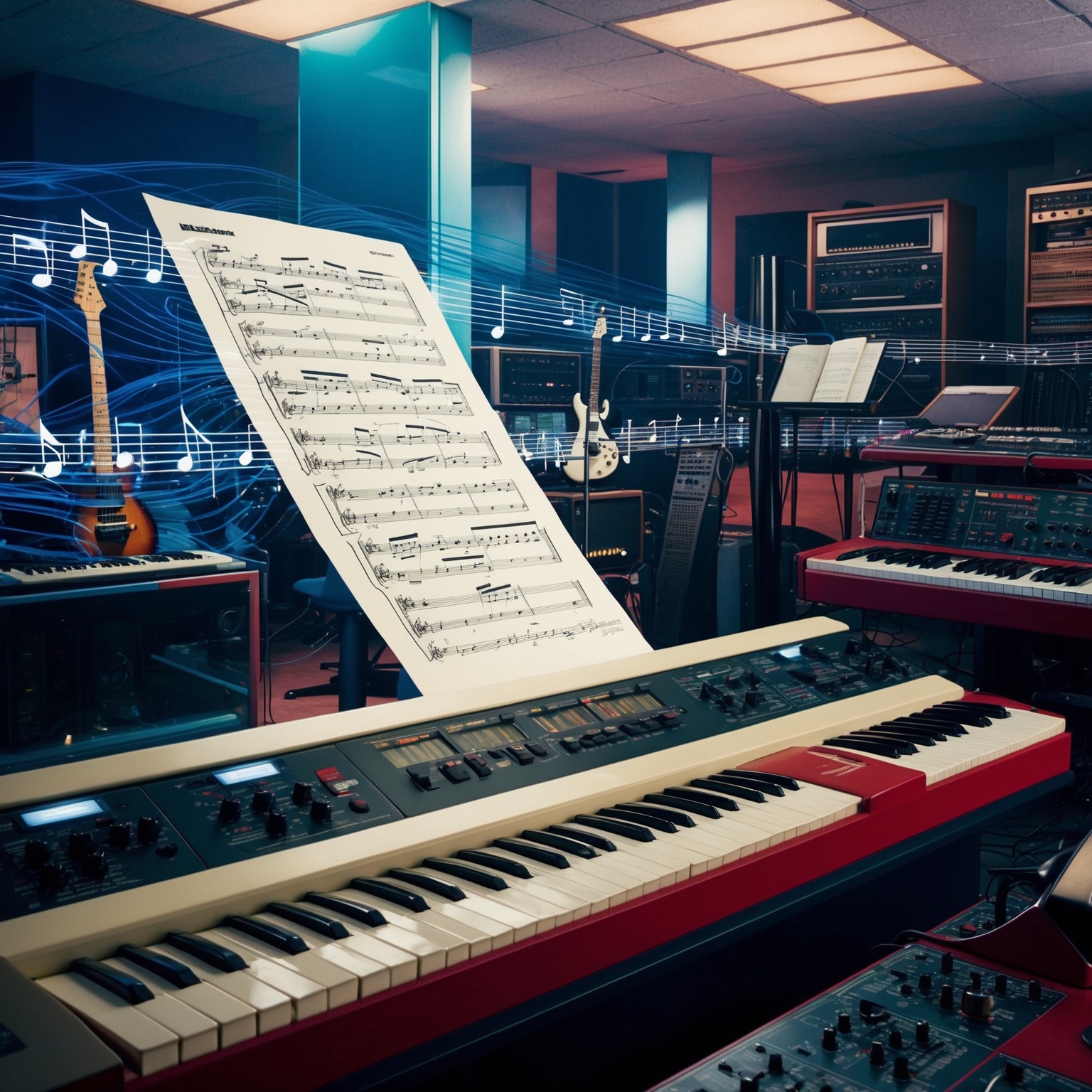
“Turbo Lover” by Judas Priest, a distinguished track from their 1986 album Turbo, exhibits a compelling and intricate musical structure that captures listeners with its blend of heavy metal bravado and electronic sophistication. Written predominantly in the key of C major, the song dexterously fuses traditional rock elements with synth-powered innovation, setting it apart from earlier works by the band. The tempo, around 126 beats per minute, provides a steady drive, giving the track its hypnotic, propulsive energy that mirrors the feeling of being behind the wheel of a high-speed vehicle.
The chord structure of “Turbo Lover” is straightforward but effective, relying on power chords that are a staple of Judas Priest’s sound. The song opens with a pulsating synth intro, building anticipation before the guitars crash in with their distinctive riffs. The melody of the verse follows a simple but catchy progression, with Rob Halford’s vocal delivery moving dynamically over the top, syncopating with the rhythm section to enhance the song’s overall momentum.
In terms of instrumentation, “Turbo Lover” is thick with the sound of twin guitars, a signature style perfected by Glenn Tipton and K.K. Downing. Their guitar work in this track is characterized by clean, harmonized leads that enhance the song’s melodic appeal while the driving rhythm section lays a solid foundation. The inclusion of synthesizers marks a significant evolution in Judas Priest’s sound, representing a notable experiment in integrating electronic elements with heavy metal. The subtle synth layers add an atmospheric texture, contrasting with the dominant guitar lines to create a unique sonic palette.
When analyzing “Turbo Lover” within Judas Priest’s discography, it signifies a pivotal moment in the band’s evolution. The composition bears a stark contrast to the raw, unpolished energy of earlier albums like British Steel or Screaming for Vengeance. This shift can be seen as a reflection of the mid-1980s musical landscape, where many rock bands were embracing technological advancements in music production. Producers such as Tom Allom played an integral role, encouraging this blending of metal and synthesizer to create a glossy, futuristic sound. The production and recording sessions were reportedly held in Compass Point Studios in Nassau, a space that allowed for creative exploration and innovation.
Exploring the Intricacies and Emotions in ‘Turbo Lover’
The lyrics of ‘Turbo Lover’ by Judas Priest combine romantic and thrill-seeking themes with a narrative of high-speed passion and emotional intensity. Through vivid metaphors and literary devices, the song constructs a compelling world of immediate and irresistible allure, while simultaneously tapping into the cultural zeitgeist of the 1980s.
But you’ll feel me
Without warning, something’s dawning
Listen (listen)
Then within your senses
You’ll know you’re defenseless
How your heart beats, when you run for cover
Your can’t retreat, I spy like no other
Then we race together, we can ride forever
Wrapped in horsepower, driving into fury
Changing gear I pull you tighter to me
…
******* This Lyrics is NOT for Commercial use *******
 Lyrical Themes and Messages: The lyrics of ‘Turbo Lover’ by Judas Priest capture a blend of romantic and thrill-seeking themes, creating a potent cocktail of emotion and adrenaline. The imagery of high-octane passion, encapsulated within the metaphor of a turbo engine, speaks to the raw intensity of love and desire. These themes resonate with audiences as they mirror the fast-paced, exciting lifestyle of the 1980s, a time characterized by rapid technological advancements and cultural shifts. The romantic allure paired with the speed motif captures a sense of urgency and inevitability, enticing listeners into a world of heightened emotions.
Lyrical Themes and Messages: The lyrics of ‘Turbo Lover’ by Judas Priest capture a blend of romantic and thrill-seeking themes, creating a potent cocktail of emotion and adrenaline. The imagery of high-octane passion, encapsulated within the metaphor of a turbo engine, speaks to the raw intensity of love and desire. These themes resonate with audiences as they mirror the fast-paced, exciting lifestyle of the 1980s, a time characterized by rapid technological advancements and cultural shifts. The romantic allure paired with the speed motif captures a sense of urgency and inevitability, enticing listeners into a world of heightened emotions.
Narrative and Storytelling: The song employs a first-person narrative, inviting the listener into an intimate and direct experience shared between the narrator and their ‘lover.’ The use of metaphorical language, such as ‘racing together’ and ‘wrapped in horsepower,’ paints a vivid picture of two individuals embarking on a thrilling journey. This narrative style enhances the song’s impact, as it pulls the audience into the high-speed romance, making them feel like active participants in the story rather than mere observers.
Use of Literary Devices: Judas Priest utilizes a rich array of literary devices to enhance the lyrical quality of ‘Turbo Lover.’ Metaphors dominate the lyrics, with comparisons drawn between love and the mechanics of a high-powered engine, showcasing an innovative way to express passion. The lyrics also embrace rhythmic patterns and alliteration, heightening their musicality and memorability. This clever use of language not only captures the imagination but also evokes a visceral emotional response from listeners.
Cultural and Social References: Released in 1986, ‘Turbo Lover’ taps into the wave of technological and automotive enthusiasm that defined the era. The allusions to speed and power double as a social commentary on the decade’s obsession with progress and innovation. While these references might have initially attracted a younger, edgy crowd, they have since become nostalgic symbols for fans who lived through or appreciate the flair of the 1980s.
Emotional Impact and Relatability: The lyrics of ‘Turbo Lover’ are designed to connect with listeners on a visceral level, evoking feelings of excitement, love, and longing. The song’s metaphorical language intensifies these emotions, challenging the audience to feel rather than simply hear the proceedings. Its success can, in part, be attributed to this ability to evoke a strong emotional response, creating an evergreen appeal that transcends the original context of its release.
🌀 Did you know? Turbo Lover by Judas Priest revved up the metal scene with synths in ’86! 🚗💨 Feel the speed and passion! #MetalMagic #80sVibes #TurboLover https://bit.ly/4fguubv
Click to Tweet

